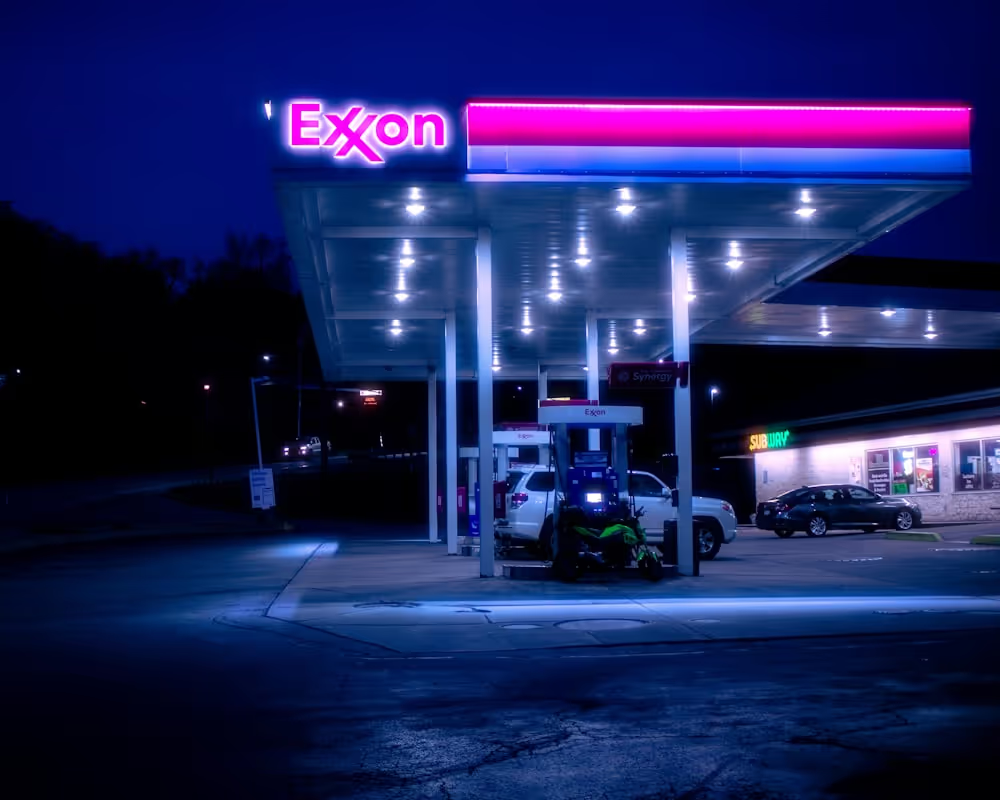Sustainability is no longer achoice, but a solution to build future-proof businesses. It is essential for the long-term success and reputation of a business. Building a sustainable business requires a comprehensive approach that integrates the three essential pillars: environmental, social, and economic considerations into every aspect of business operations. The sustainability orientation is currently being explored and executed by firms big and small - from WalMart to McDonald as a key priority move.

To Be or Not To Be?
Dr Matt Johnson, Professor at Hult International Business School said, "There is accumulating evidence that consumers are impacted by the perceived sustainability of [a] brand, and further, that consumers are willing to pay a premium for products from a sustainable brand over a non-sustainable competitor brand".[i] Hence, sustainability orientation is viewed as a competitive advantage for firms in contemporary markets. It has emerged as the new marketing strategy paradigm in the last few decades. Companies choose to highlight their eco-friendly practices, ethical sourcing and social responsibility efforts to appeal to environment-friendly consumers and differentiate themselves from competitors. This trend has led to the proliferation of terms like “green”, “eco-friendly” and “sustainable” in advertising and branding. However, such marketing efforts are not free from criticism as they are often clouded by skepticism about the sincerity of these claims and face backlash of “greenwashing” consumer mistrust and deception.
While companies resort to marketing their sustainable practices the question remains on what would be the most effective way to align sustainable practices with marketing? Is sustainability narratives only about implementing environment-friendly practices by reducing the consumption of limited resources, or finding alternative resources? How can firms choose to effectively talk about their sustainability practices without facing any backlash? Although cynics point at the incompatibility of sustainability and marketing where the former thrives to reduce consumption and the latter aims to increase it: Can firms seeking mass market success, afford to ignore sustainability as a marketing tool?
Which Quadrant is yours?
It has been well evidenced that effective communication is the cornerstone of sustainable marketing irrespective of the extent of transparency that the firm chooses to practice. As per the 2016 Business Horizon article by Baldassarre and Campo, four different types of approaches to sustainability communication have been noted that vary in their degree of communication (appearing sustainable) and commitment (being sustainable). As transparency is a manageable property of a firm, the matrix with the four alternative positions breaks down the dynamic states of an organisation and highlights how each position can be managed for competitive positioning.
Four Cases in a Matrix

Opaque companies: Illustration with ‘Chevron’ case
Chevron Corporation is one of the world's largest integrated energy companies listed on the New York Stock Exchange (NYSE). The company is engaged in all aspects of the oil and natural gas industry, including exploration, production, refining, marketing, and transportation. With worldwide operations spanning across North America, Latin America, Europe, Africa, the Middle East, Asia Pacific, and Australia - Chevron's core business remains focused on fossil fuels. The company has started to invest in renewable energy and low-carbon technologies including investments in solar, wind, and biofuels, as well as research and development efforts to offer a range of salutary products to advance alternative energy sources and reduce greenhouse gas emissions.
Interestingly Chevron's commitment to sustainability and its communication efforts have been subject to scrutiny and debate. Chevron has published sustainability reports outlining its environmental, social, and governance (ESG) performance. While this demonstrates a degree of transparency, some stakeholders question the accuracy and completeness of these reports, citing instances of greenwashing or selective reporting to present a more favourable image. Yet, over the years Chevron has made some efforts to commit to sustainability and communicate its initiatives despite persistent concerns and criticisms regarding the company's environmental impact, transparency, community engagement, climate change mitigation, legal issues, and stakeholder engagement.
In this light, it is apparent that the long-term survival of opaque companies like Chevron can be risky if they remain stuck in this quadrant for too long. The solution is to evolve with a greater commitment to being sustainable over just focusing on appearing to be sustainable.

Translucent companies: Illustration with ‘Chanel’ case
Chanel is a globally renowned luxury fashion and beauty brand known for its timeless elegance, innovation, and iconic designs. Chanel operates as a privately held global company, with ownership held by the Wertheimer family. The brand maintains a high degree of control over its operations, allowing it to uphold its standards of quality, creativity, and exclusivity. The brand's logo, featuring intertwined double-C initials, is one of the most recognisable symbols in the fashion industry.
Chanel's advertising campaigns often feature top models and celebrities, reinforcing its image as a symbol of sophistication and glamour, its retail spaces are designed to reflect its heritage and aesthetic, offering a luxurious shopping experience to customers. But for many years the brand chose not to communicate information about its social commitment, despite taking conscious steps to address environmental sustainability in its operations through several initiatives ranging from improving energy efficiency in manufacturing processes to implementing ethical and responsible sourcing of raw materials. The brand supported sustainable agriculture, stood for a circular economy and published a sustainability report highlighting its commitments and initiatives. However, critics argue that the level of detail provided in these reports is limited, making it challenging for stakeholders to assess the effectiveness of Chanel's sustainability practices fully.
Chanel operated as a translucent company that is responsible but chose not to view their commitment to sustainability from a strategic perspective but only as a moral duty. While Chanel has taken some steps towards sustainability and has begun to communicate its efforts more transparently, there are areas where the brand can improve its communication to move beyond the image of just pleasing products by virtue of its commitment. Hence, for translucent companies like Chanel, it becomes imperative to consider that silence is silver, but speech would be golden.
Transparent Companies: Illustration with ‘Patagonia’ case
Patagonia Inc. founded in 1973 is an American outdoor apparel and gear company known for its commitment to environmental and social responsibility. Patagonia offers a wide range of outdoor apparel, gear, and accessories for various outdoor activities, including hiking, climbing, skiing, snowboarding, surfing, and fishing. Its product lineup includes clothing items such as jackets, fleeces, vests, shirts, pants, and base layers, as well as backpacks, duffel bags, hats, gloves, and footwear.
As a company with a strong commitment to environmental and social responsibility. The company prioritises sustainability throughout its operations, from sourcing materials to manufacturing processes and product lifecycle management. Patagonia advocates for environmental conservation, supports regenerative agriculture, promotes fair labour practices, and donates a portion of its profits to environmental causes through initiatives like "1% for the Planet." To complement its commitment Patagonia maintains the highest level of transparency in its supply chain, providing detailed information about the sourcing and manufacturing of its products. The company works closely with suppliers to ensure fair labour practices, safe working conditions, and environmental stewardship. It also partners with industry organisations and initiatives to address social and environmental challenges within the apparel industry.
Patagonia serves as an outstanding example of a company that has stayed committed to sustainability while responsibly communicating its efforts to stakeholders. Its holistic approach to sustainability, transparency in communication, and genuine commitment to environmental and social responsibility make it a role model for businesses striving to make a positive impact on the planet with actions that speak as loudly as words. Its mission statement, "We're in business to save our home planet," reflects its overarching commitment to sustainability and activism as an effective competitive strategy.

Dark Companies: Illustration with ‘Exxon Mobil’ case
Small and inexperienced companies that are less conscious of the importance of sustainable practices generally operate in this quadrant. They often suffer from business inertia with low commitment and low communication on sustainability. Dark companies are deficient to the extent of being invisible in the competitive landscape. They often run the risk of rapid obsolescence where they fail to spot the opportunity of integrating and prioritising sustainability as a marketing tool.
While it is unlikely for large companies to be unaware of sustainability, if not irresponsible they would rather be positioned in the opaque quadrant. However, to illustrate the position, Exxon Mobil, one of the world's largest oil and gas companies, has faced significant criticism for its lack of commitment to addressing climate change and transitioning to renewable energy sources. The company has been accused of downplaying the risks of climate change and funding climate denial campaigns. Critics argue that ExxonMobil's business model relies heavily on fossil fuels, contributing to greenhouse gas emissions and environmental degradation. Despite increasing pressure from investors and stakeholders, ExxonMobil has been slow to adopt sustainable practices and transparently communicate about its environmental impact.
In Summary
While sustainability can be an effective marketing tool for companies seeking to appeal to environmentally conscious consumers, businesses need to demonstrate authenticity and integrity in their sustainability efforts to build trust and credibility with consumers and stakeholders. As sustainability is pursued as a core part of the long-term mission, communication that is mapped and aligned with the long-term mission of the business is required. Communication around sustainability that is Meaningful; Likeable; Transferable; Adaptable and Protectable with a high level of transparency in describing its process to pursue environmental sustainability makes it a desirable product. It is imperative to note that by prioritising sustainability, organisations can create value for their stakeholders while contributing to a more sustainable future. As Peter Drucker says “the best way to predict the future is to create it”, it is already being evidenced that organisations with sustainability at their core will be the ones to survive the fiercest competition and wildest disruptions.









